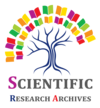An assessment of knowledge, attitude and practice of Dinacharya procedures among ayurveda doctors across India: A cross-sectional Survey
1 Department of Swasthavritta and Yoga, RK University Ayurvedic College and Hospital, Rajkot, Gujarat, India.
2 Department of Swasthavritta, CARC, Nigdi, Pune, Maharashtra, India.
Research Article
International Journal of Biological and Pharmaceutical Sciences Archive, 2024, 08(02), 035–046.
Article DOI: 10.53771/ijbpsa.2024.8.2.0082
Publication history:
Received on 30 August 2024; revised on 13 October 2024; accepted on 16 October 2024
Abstract:
Background: Ayurveda is not merely a curative science rather it is a lifestyle guide which helps to promote health and prevent diseases. The preventive aspects of Ayurveda are accommodated under the umbrella of Swasthavritta which includes Dinacharya, Ratricharya, Ritucharya, Rules regarding Nidra, the concept of Dharaneeya and Adharaneeya vegas, Ahaaram, Sadvruttam, Rasayanam, etc which help to strengthen the defense mechanism of the body. Ayurveda doctors are supposed to be the ambassadors of these health promotive measures to the common mass.
Aim: The present work aimed at assessing the Knowledge, Attitude and Practices of selected Dinacharya procedures among the Ayurveda doctors across India.
Materials and methodology: A KAP survey was conducted among the Ayurveda doctors across India by sharing a structured closed ended questionnaire through google form. 311 subjects participated in the study.
Results: 1) Knowledge: Majority of the respondents are aware (partially/fully) about the Dinacharya practices. 2)Attitude: Majority of the respondents agree to the health benefits of Dinacharya practices because they have experienced them either personally or have learnt about it from the experiences of others.3)Practices: 23.8% were waking up in Brahma Muhurta, 20.2% were practicing Ushajalapaanam though none of them consumed 8 prasruthi of water as classically advised, 16.7% respondents used herbal toothpastes, 88.4% reported to be practicing Jihwanirlekhanam but none were using metallic or wooden tongue cleaners as classically indicated, only 19.3% respondents used herbal collyrium regularly, 6.7% practiced Pratimarsha nasyam daily, 13.5% practiced gandoosham, 1 % practiced dhumapanam daily, 27% respondents practiced abhyangam and 23.2% respondents practiced vyaayamam daily.
Conclusions: There exists a wide gap in the Knowledge and practice of Dinacharya practices even among the ayurveda doctors.
Keywords:
Ayurveda; Dinacharya; Health promotion; Nasyam; Abhyangam
Full text article in PDF:
Copyright information:
Copyright © 2024 Author(s) retain the copyright of this article. This article is published under the terms of the Creative Commons Attribution Liscense 4.0
